Experimental and Analytical Simulation Analyses on the Electrical Performance of Thermoelectric Generator Modules for Direct and Concentrated Quartz-Halogen Heat Harvesting
Abstract
1. Introduction
2. Materials and Methods
2.1. Analytical Model Method for TEG Characterisation
2.2. Experimental Facility and Instrumentation
2.2.1. Heat-Stove TEG System Components for Direct Heat Harvesting
2.2.2. TEG System Components for Peltier Failure Mode Analysis under Extreme Temperature Variance
2.2.3. System Components for Quartz-Halogen Radiative Heat Harvesting Using Fresnel Lens with Peltier TEG Module
3. Results and Discussion
3.1. Simulation Analysis on TEG Electrical Performance
3.2. Experimental Results
3.2.1. Direct Heat Harvesting with Heat-Stove TEG
Open Circuit Voltage Test
Short Circuit Current Test ()
Full Load Test
3.2.2. Peltier Electrical Failure Mode Analysis under Extreme Temperature Variance
3.2.3. Concentrated Quartz-Halogen Light and Radiative Heat Harvesting Using Fresnel Lens with Peltier TEG Module
4. Conclusions
Author Contributions
Funding
Acknowledgments
Conflicts of Interest
Abbreviations
| Nomenclature | |
| α | Seebeck coefficient (V/K) |
| V | voltage (V) |
| I | current (A) |
| k | thermal conductivity (Wcm−1K−1) |
| electrical Resistivity (Ω∙cm) | |
| figure of merit (dimensionless) | |
| temperature difference (K) | |
| temperature (K) | |
| average temperature (K) | |
| K | thermal conductance (Wcm−2K−1) |
| R | resistance (Ω) |
| L | length of thermoelectric element (cm) |
| Q | heat flow (W) |
| η | heat-to-power conversion efficiency (%) |
| P | power (W) |
| A | cross-sectional area (cm−2) |
| TEG | thermoelectric generator |
| DC | direct current |
| MPP | maximum power point |
| EV | electric vehicle |
| MATLAB | matrix laboratory software |
| Subscripts | |
| oc | open circuit |
| sc | short circuit |
| p, n | semiconductor properties showing impurity doping |
| i | internal |
| L | load |
| H | hot side |
| c | cold side |
| mp | maximum power |
| mc | maximum conversion |
| Chemical Formula | |
| Bi2Te3 | bismuth telluride |
References
- Montecucco, A.; Siviter, J.; Knox, A.R. The effect of temperature mismatch on thermoelectric generators electrically connected in series and parallel. Appl. Energy 2014, 123, 47–54. [Google Scholar] [CrossRef]
- Tang, Z.B.; Deng, Y.D.; Su, C.Q.; Shuai, W.W.; Xie, C.J. A research on thermoelectric generator’s electrical performance under temperature mismatch conditions for automotive waste heat recovery system. Case Stud. Therm. Eng. 2015, 5, 143–150. [Google Scholar] [CrossRef]
- Goldsmid, H.J. Bismuth telluride and its alloys as materials for thermoelectric generation. Materials 2014, 7, 2577–2592. [Google Scholar] [CrossRef] [PubMed]
- Rocha, R.P.; Carmo, J.P.; Goncalves, L.M.; Correia, J.H. An energy scavenging microsystem based on thermoelectricity for battery life extension in laptops. In Proceedings of the 35th Annual Conference of IEEE Industrial Electronics, Porto, Portugal, 3–5 November 2009; pp. 1813–1816. [Google Scholar] [CrossRef]
- Xie, W.T.; Dai, Y.J.; Wang, R.Z.; Sumathy, K. Concentrated solar energy applications using Fresnel lenses: A review. Renew. Sustain. Energy Rev. 2011, 15, 2588–2606. [Google Scholar] [CrossRef]
- Nia, M.H.; Nejad, A.A.; Goudarzi, A.M.; Valizadeh, M.; Samadian, P. Cogeneration solar system using thermoelectric module and fresnel lens. Energy Convers. Manag. 2014, 84, 305–310. [Google Scholar] [CrossRef]
- Polozine, A.; Sirotinskaya, S.; Schaeffer, L. History of development of thermoelectric materials for electric power generation and criteria of their quality. Mater. Res. 2014, 17, 1260–1267. [Google Scholar] [CrossRef]
- Rowe, D.M. Thermoelectrics Handbook: Macro to Nano; CRC Press: Boca Raton, FL, USA, 2005; ISBN 9781420038903. [Google Scholar]
- Goldsmid, H.J. The Thermoelectric and Related Effects. In Introduction to Thermoelectricity; Springer: Berlin/Heidelberg, Germany, 2016; pp. 1–7. [Google Scholar] [CrossRef]
- Tritt, T.M.; Subramanian, M.A. Thermoelectric materials, phenomena, and applications: A bird’s eye view. MRS Bull. 2006, 31, 188–198. [Google Scholar] [CrossRef]
- Telkes, M. Solar thermoelectric generators. J. Appl. Phys. 1954, 25, 765–777. [Google Scholar] [CrossRef]
- Kraemer, D.; Jie, Q.; McEnaney, K.; Cao, F.; Liu, W.; Weinstein, L.A.; Loomis, J.; Ren, Z.; Chen, G. Concentrating solar thermoelectric generators with a peak efficiency of 7.4%. Nat. Energy 2016, 1, 16153. [Google Scholar] [CrossRef]
- Appel, O.; Zilber, T.; Kalabukhov, S.; Beeri, O.; Gelbstein, Y. Morphological effects on the thermoelectric properties of Ti 0.3 Zr 0.35 Hf 0.35 Ni 1+ δ Sn alloys following phase separation. J. Mater. Chem. C 2015, 3, 11653–11659. [Google Scholar] [CrossRef]
- Appel, O.; Schwall, M.; Mogilyansky, D.; Köhne, M.; Balke, B.; Gelbstein, Y. Effects of microstructural evolution on the thermoelectric properties of spark-plasma-sintered Ti 0.3 Zr 0.35 Hf 0.35 NiSn half-Heusler compound. J. Electron. Mater. 2013, 42, 1340–1345. [Google Scholar] [CrossRef]
- Mastbergen, D.; Willson, B.; Joshi, S. Producing light from stoves using a thermoelectric generator. Ethos 2005. Available online: http://everredtronics.com/files/Mastbergen_ETHOS_lighting_power_from_STOVE.pdf (accessed on 2 February 2018).
- Ming, T.; Yang, W.; Huang, X.; Wu, Y.; Li, X.; Liu, J. Analytical and numerical investigation on a new compact thermoelectric generator. Energy Convers. Manag. 2017, 132, 261–271. [Google Scholar] [CrossRef]
- Nemani, S.V.; Shahi, D.; De, M. Effective generation of electrical energy from exhaust gases in automobiles. In Proceedings of the Power India International Conference (PIICON), Bikaner, India, 25–27 November 2016; IEEE: Piscataway, NJ, USA, 2016; Volume 25, pp. 1–6. [Google Scholar] [CrossRef]
- Goldsmid, H.J. Conversion efficiency and figure-of-merit. In CRC Handbook of Thermoelectrics; CRC Press: Boca Raton, FL, USA, 14 July 1995; pp. 19–25. ISBN 9780849301469. [Google Scholar]
- Lee, H.S. Thermal Design: Heat Sinks, Thermoelectrics, Heat Pipes, Compact Heat Exchangers, and Solar Cells; John Wiley & Sons: Hoboken, NJ, USA, 2010; ISBN 1118004701. [Google Scholar]
- Bobean, C.; Pavel, V. The study and modeling of a thermoelectric generator module. In Proceedings of the 2013 8th International Symposium on Advanced Topics in Electrical Engineering (ATEE), Bucharest, Romania, 23–25 May 2013; IEEE: Piscataway, NJ, USA, 2013; pp. 1–4. [Google Scholar] [CrossRef]
- Madhugiri, G.A.; Karale, S.R. High solar energy concentration with a Fresnel lens. A Review. Int. J. Mod. Eng. Res. 2012, 2, 1381–1385. [Google Scholar]
- Davis, A.; Kühnlenz, F. Optical design using Fresnel lenses: Basic principles and some practical examples. Optik Photonik 2007, 2, 52–55. [Google Scholar] [CrossRef]
- Liu, X.; Deng, Y.D.; Li, Z.; Su, C.Q. Performance analysis of a waste heat recovery thermoelectric generation system for automotive application. Energy Convers. Manag. 2015, 90, 121–127. [Google Scholar] [CrossRef]
- Choi, H.S.; Seo, W.S.; Choi, D.K. Prediction of reliability on thermoelectric module through accelerated life test and Physics-of-failure. Electron. Mater. Lett. 2011, 7, 271. [Google Scholar] [CrossRef]
- Baskaya, S.; Karaaslan, S.; Calisir, T.; Zeki Yilmazoglu, M.; Yilmaz, T.O. Experimental and Numerical Study on Thermoelectric Generator Performance Applied to a Condensing Combi Boiler. Heat Transf. Eng. 2015, 36, 1292–1302. [Google Scholar] [CrossRef]
- Memon, S. Analysing the potential of retrofitting ultra-low heat loss triple vacuum glazed windows to an existing UK solid wall dwelling. Int. J. Renew. Energy Dev. (IJRED) 2014, 3, 161–174. [Google Scholar] [CrossRef]
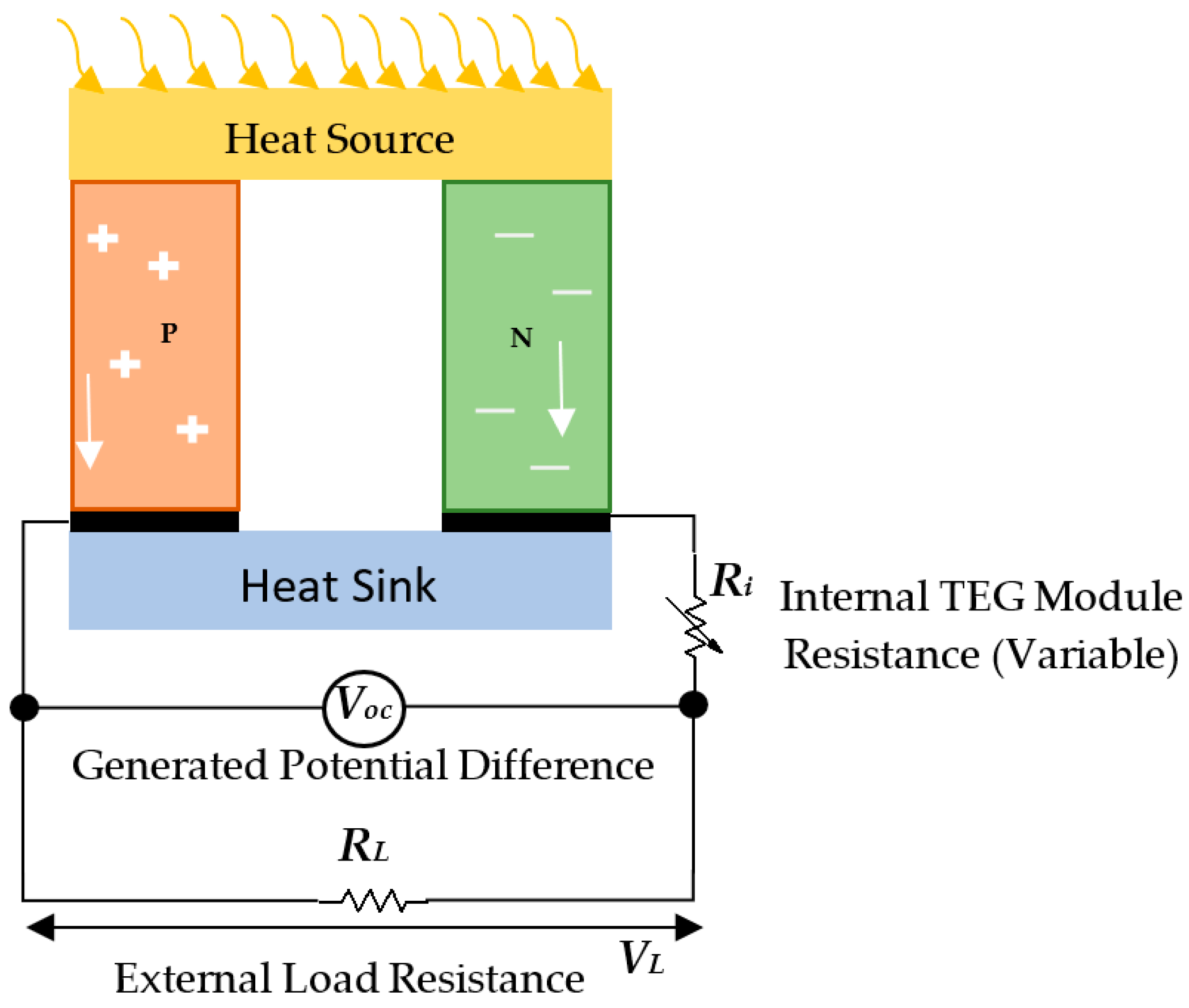
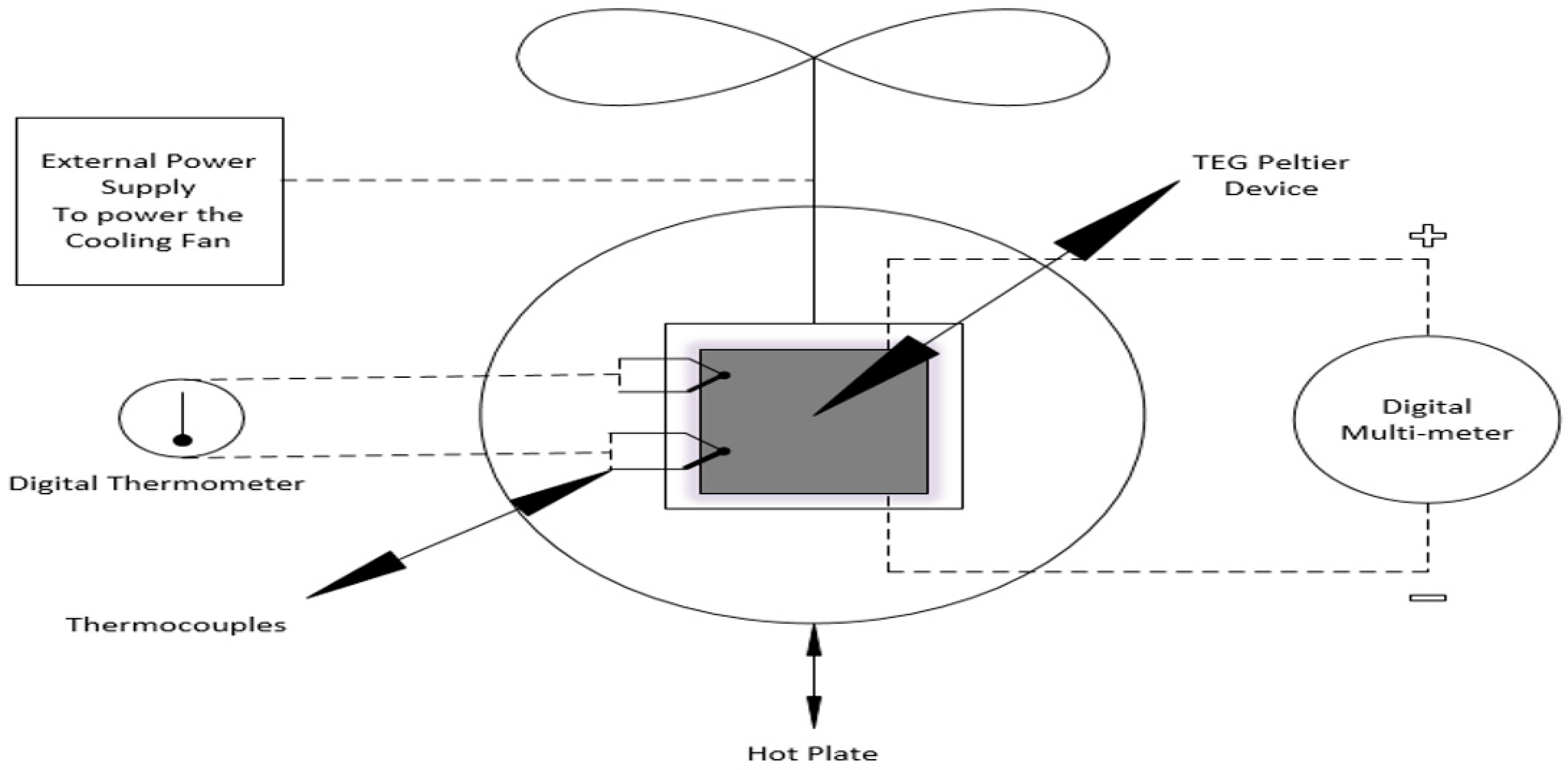
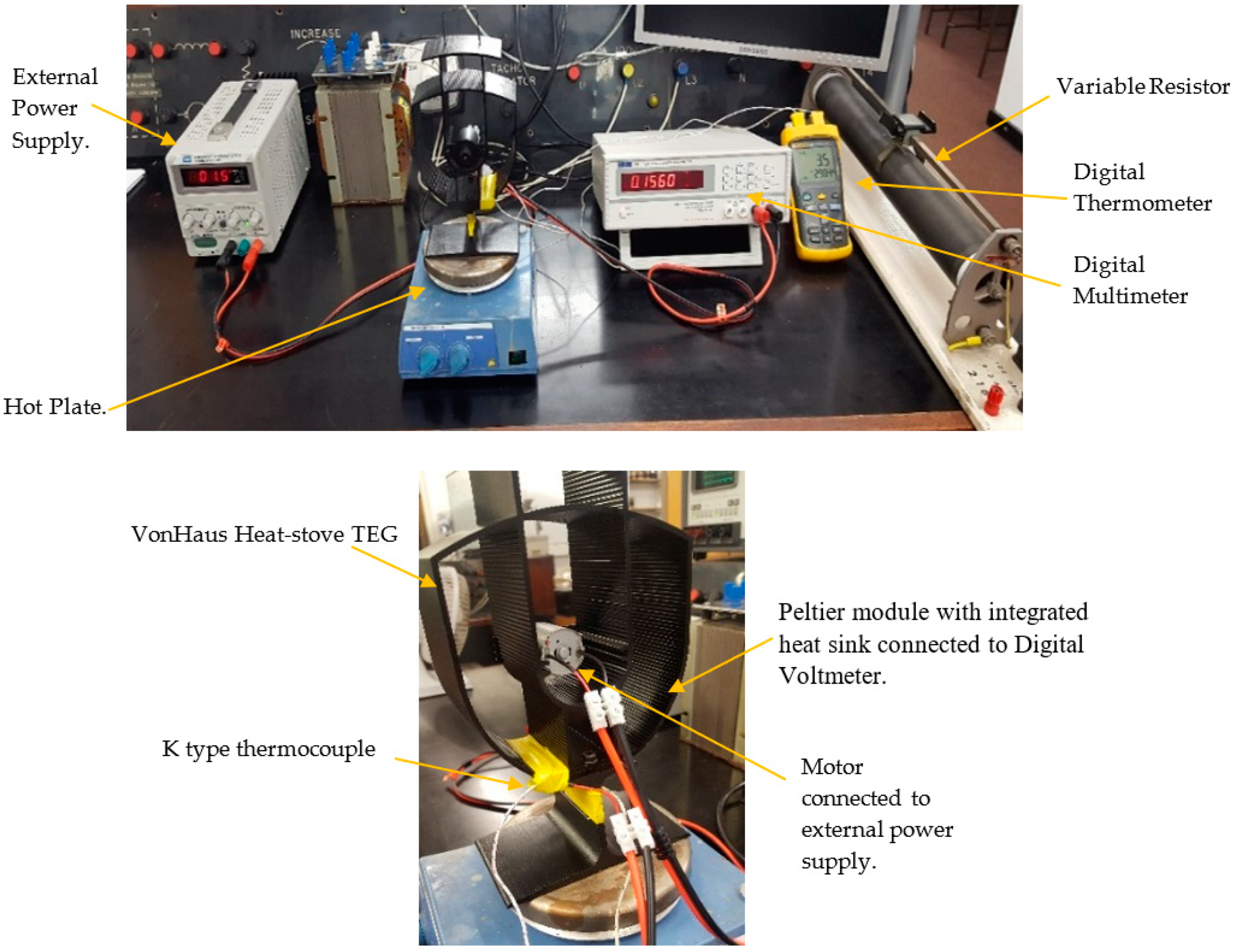

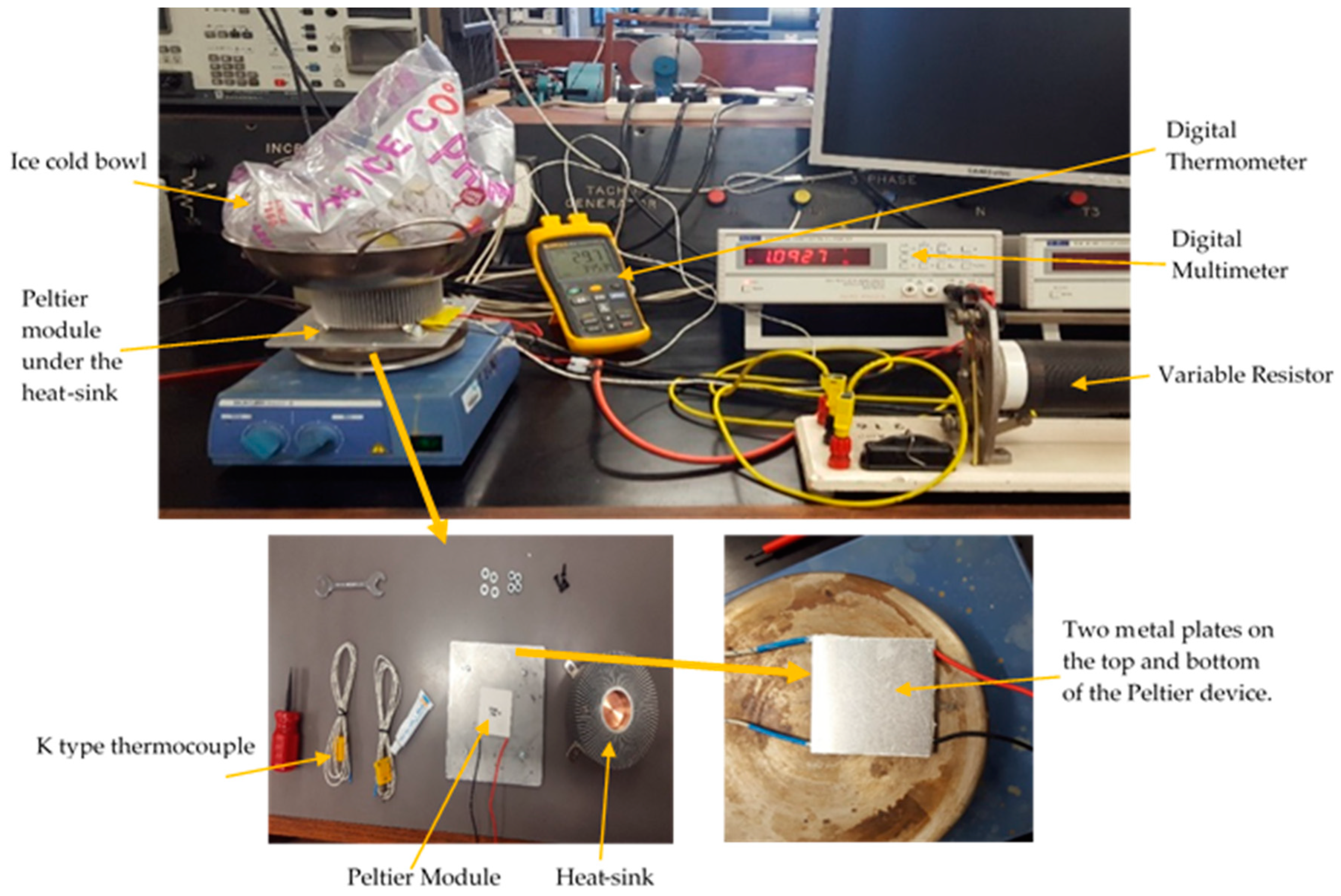
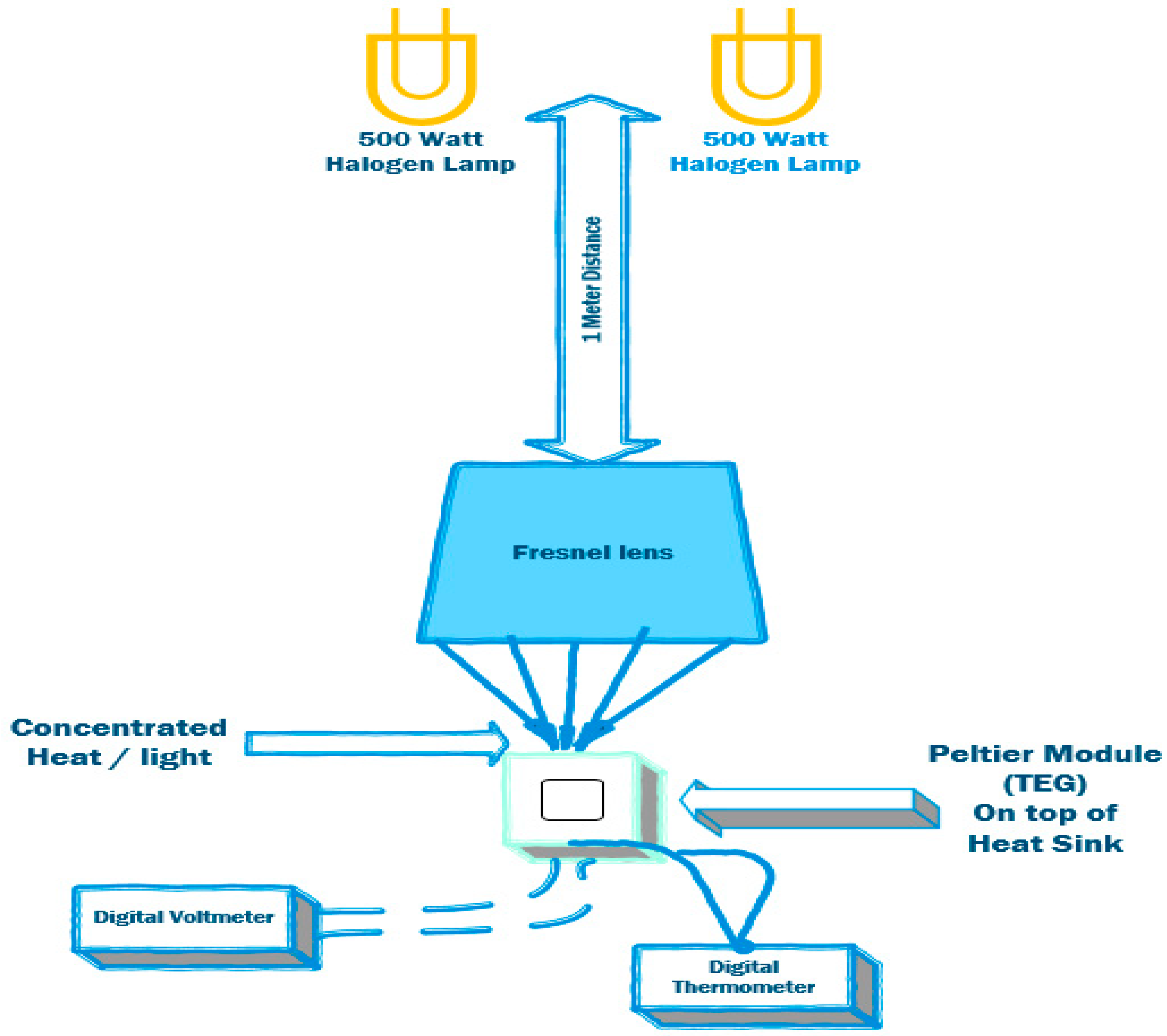
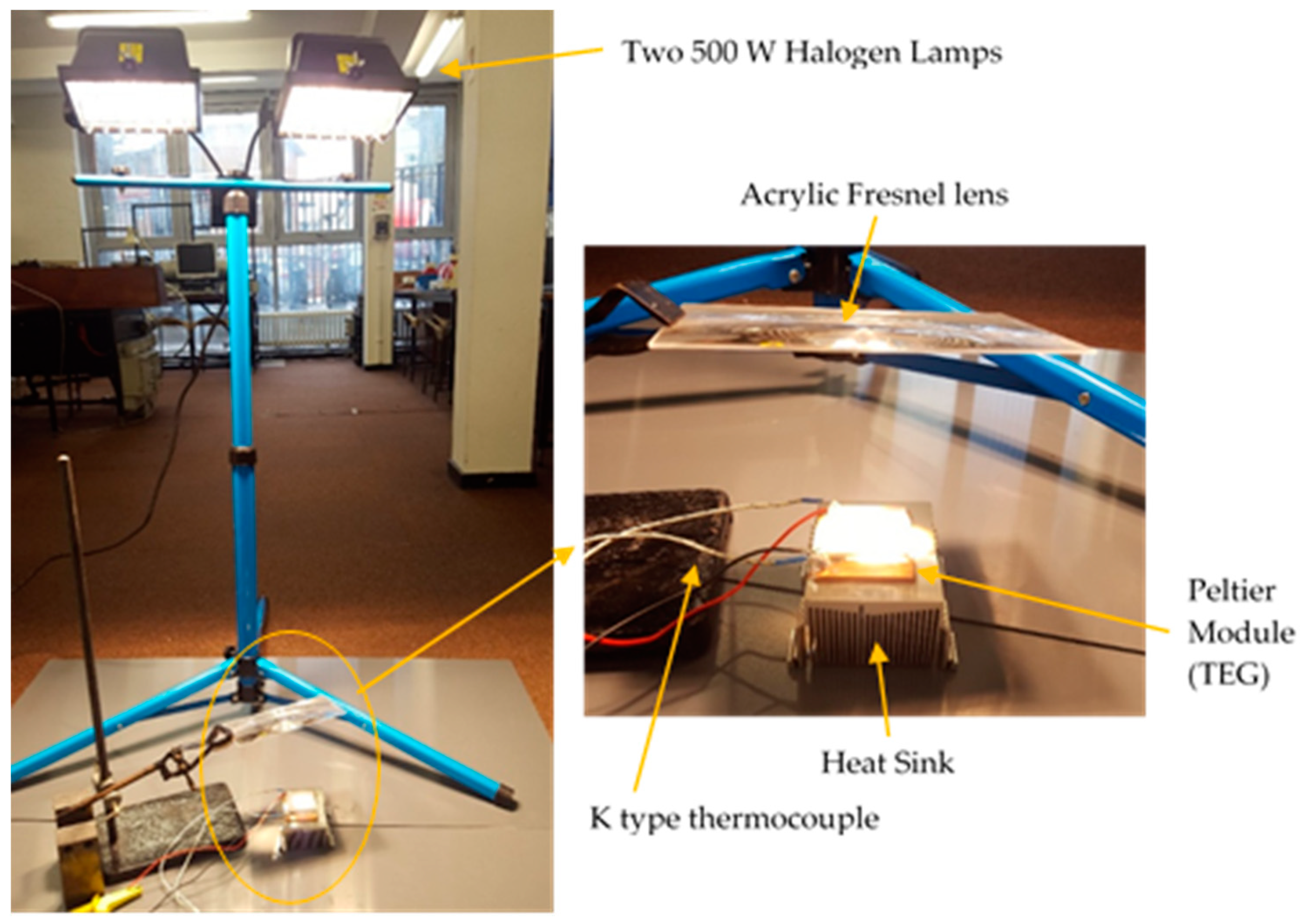
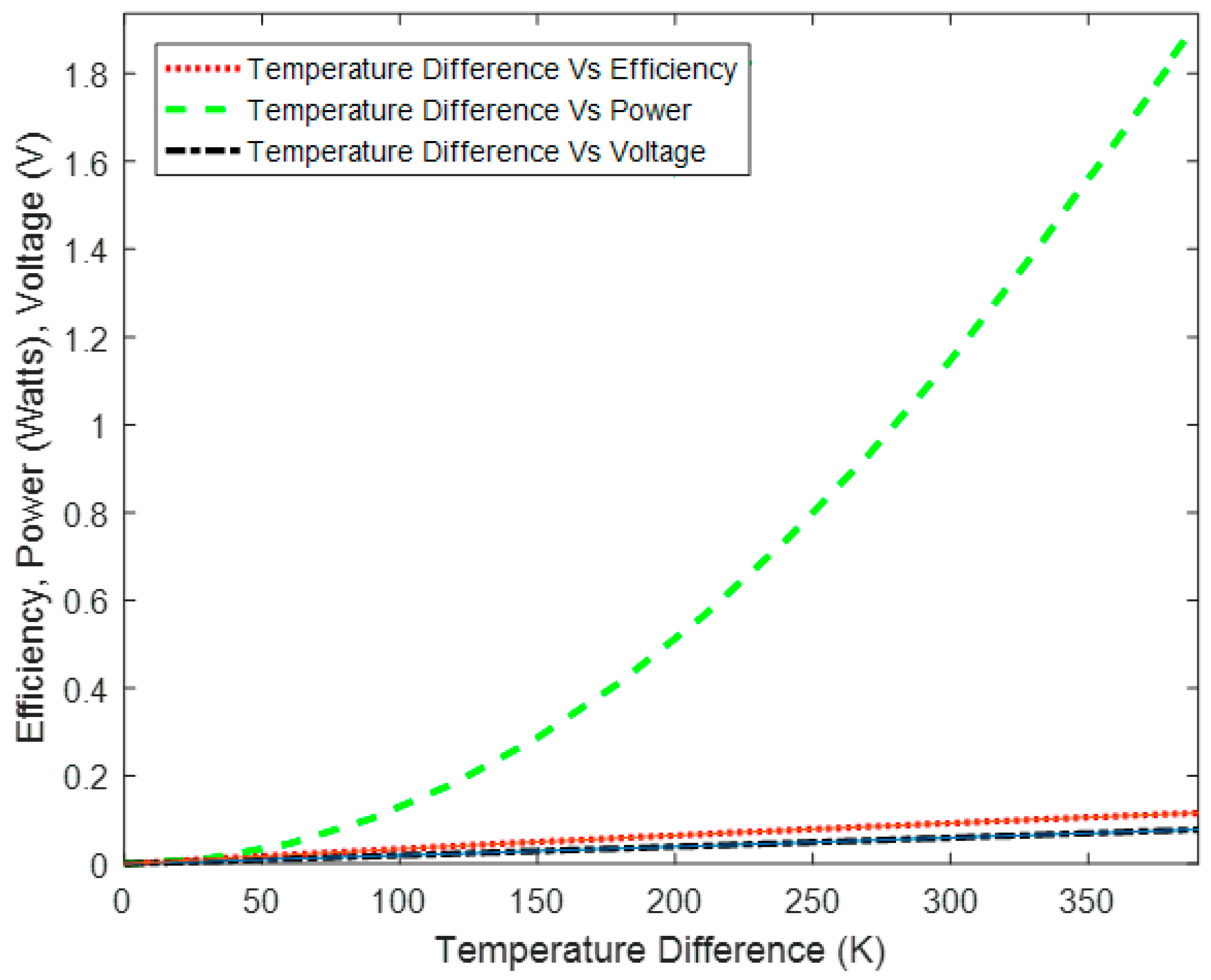
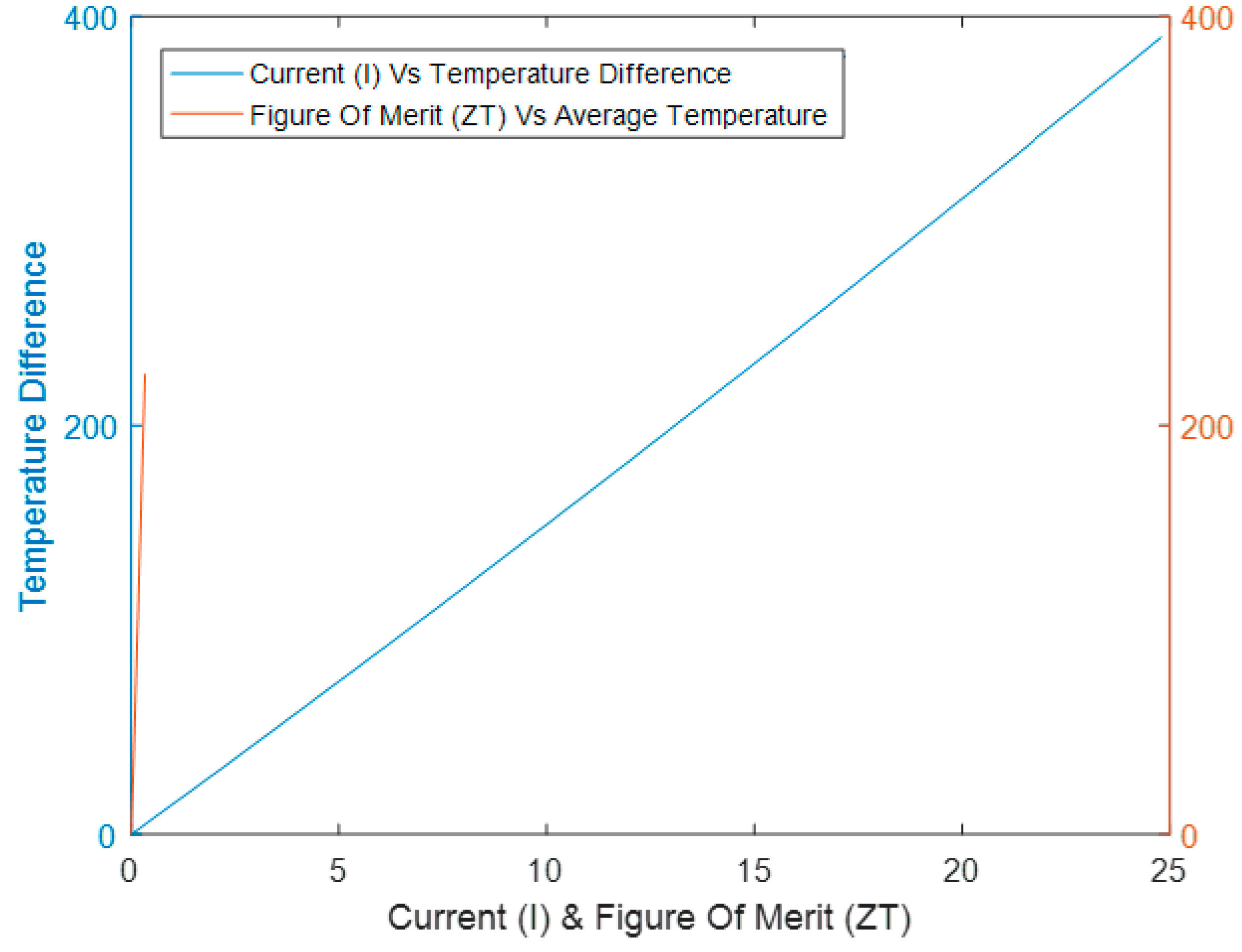
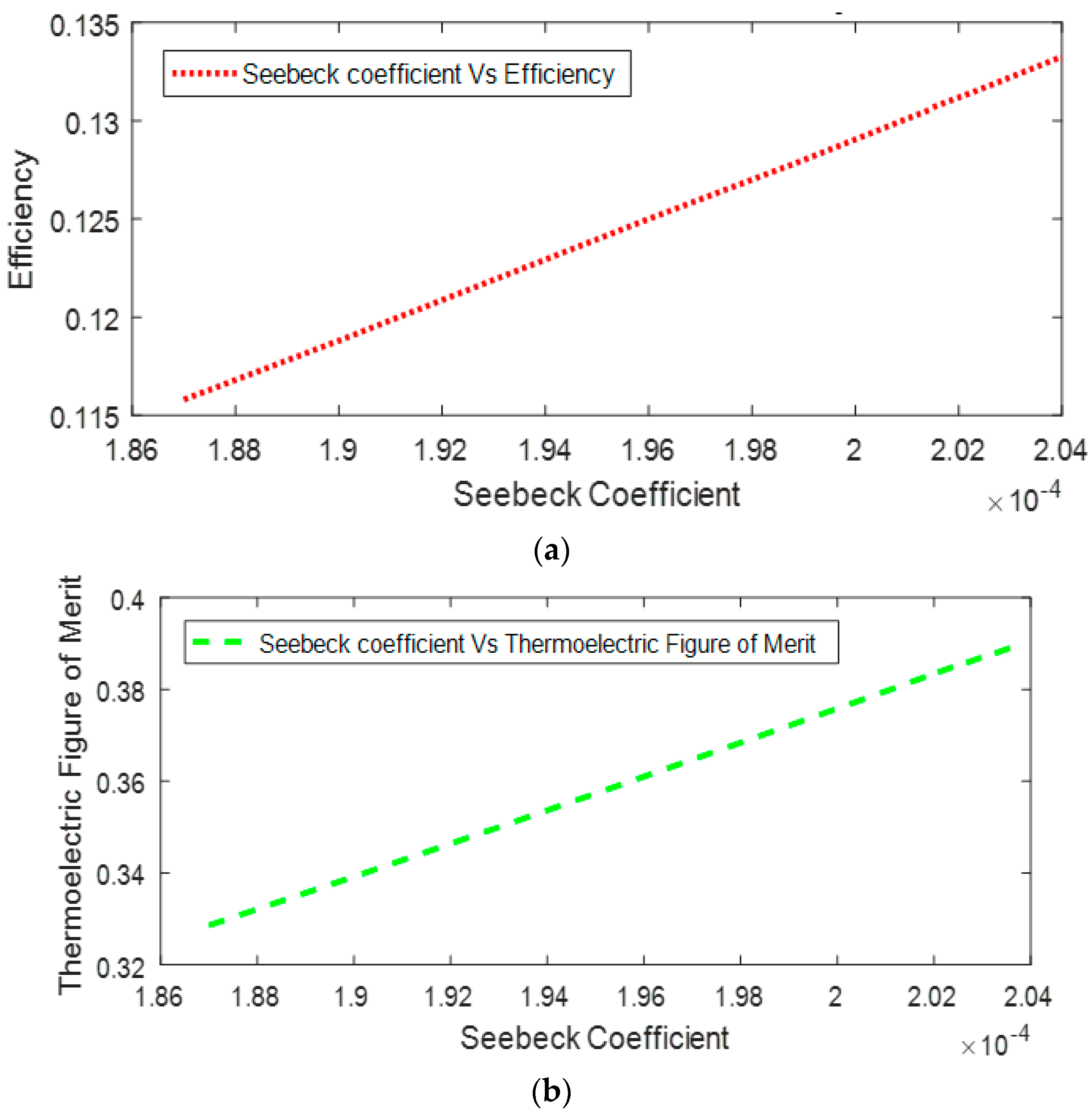

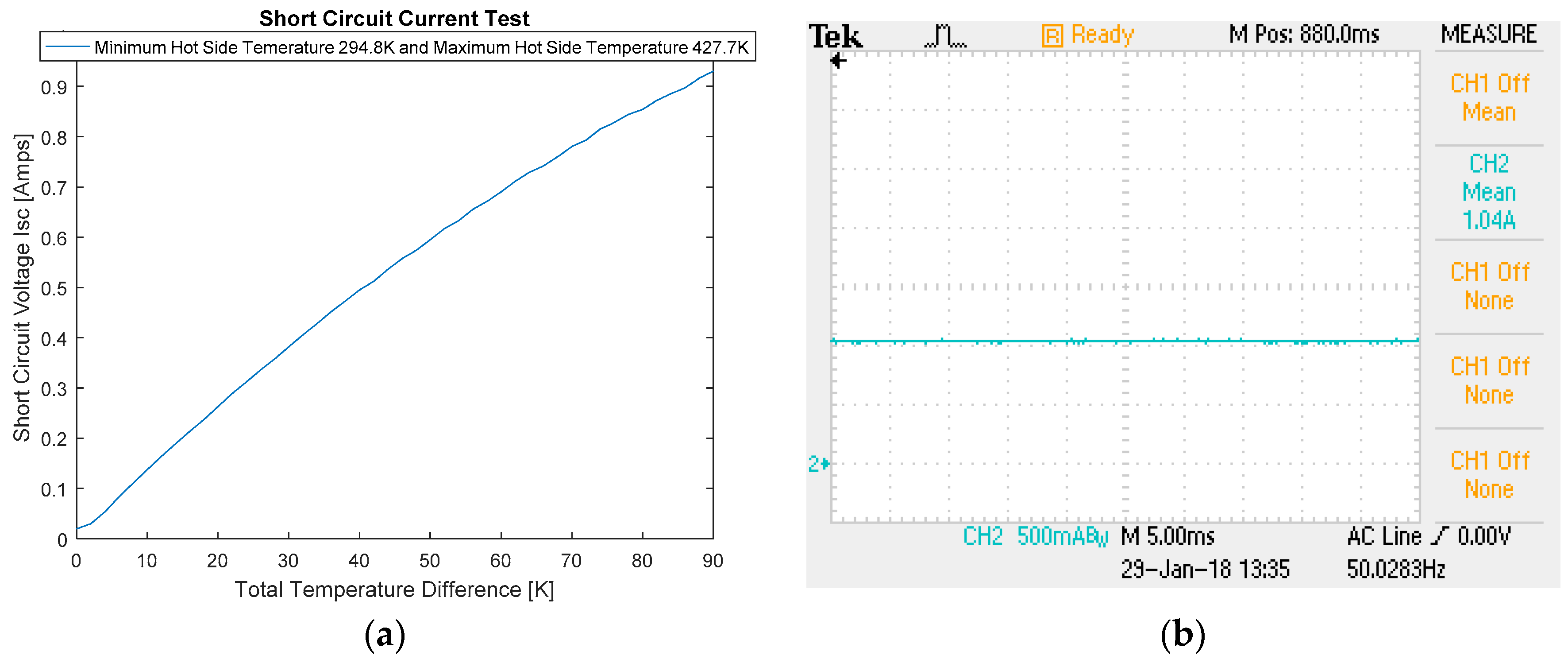
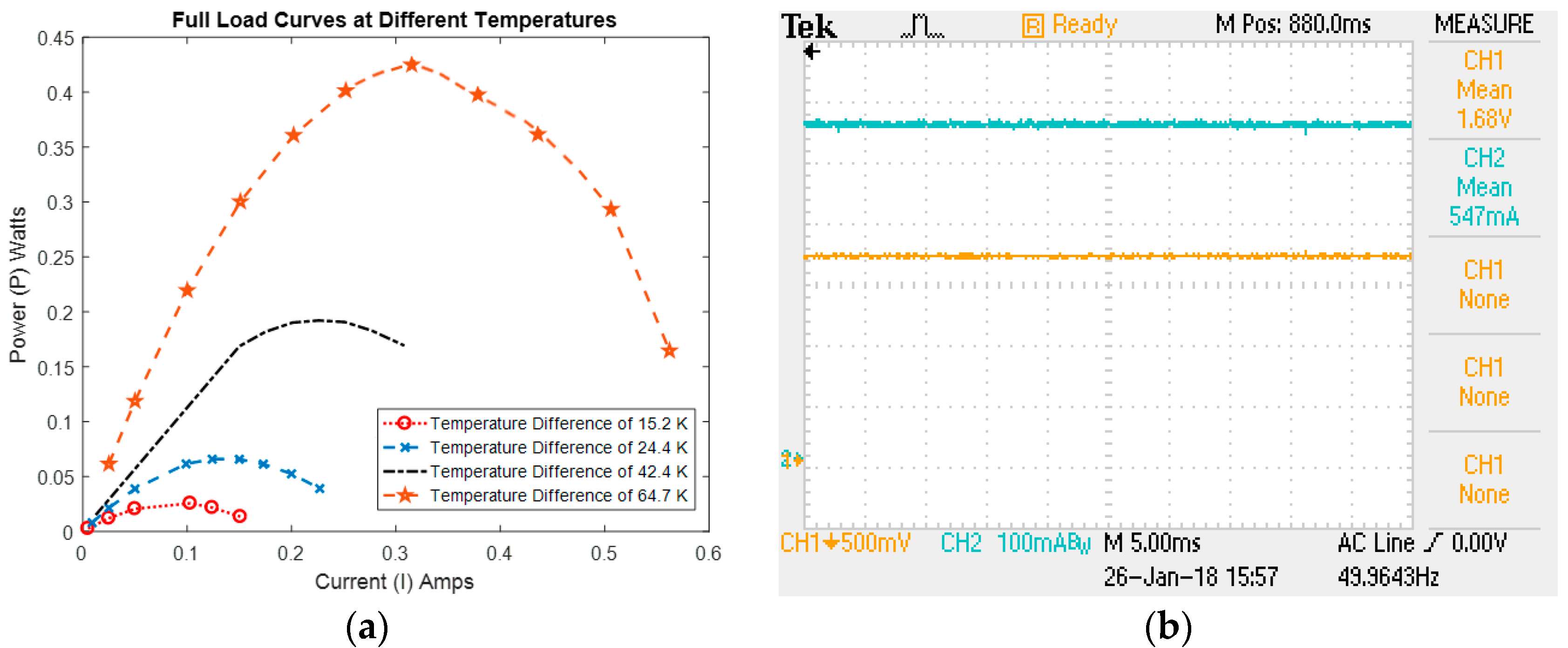


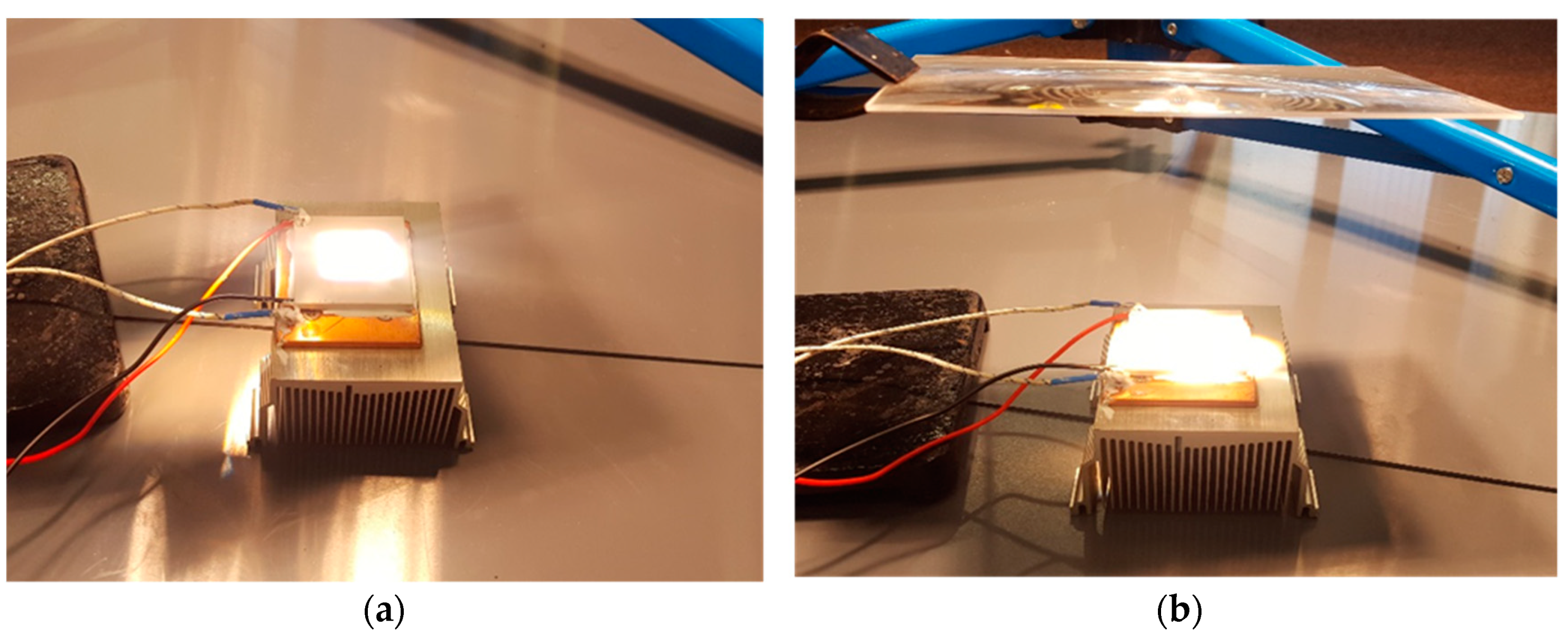
| Heat-Source Temperature | Voc (V) | VL (V) | IL (A) | Ri (Ω) | RL (Ω) | PL (W) | Tolerances (%) |
|---|---|---|---|---|---|---|---|
| 373.15 K | 3.22 | 1.8 | 1 | 1.8 | 1.8 | 1.8 | ±10 |
| 473.15 K | 8.54 | 4.27 | 2 | 2.1 | 2.1 | 8.5 | ±10 |
© 2018 by the authors. Licensee MDPI, Basel, Switzerland. This article is an open access article distributed under the terms and conditions of the Creative Commons Attribution (CC BY) license (http://creativecommons.org/licenses/by/4.0/).
Share and Cite
Memon, S.; Tahir, K.N. Experimental and Analytical Simulation Analyses on the Electrical Performance of Thermoelectric Generator Modules for Direct and Concentrated Quartz-Halogen Heat Harvesting. Energies 2018, 11, 3315. https://doi.org/10.3390/en11123315
Memon S, Tahir KN. Experimental and Analytical Simulation Analyses on the Electrical Performance of Thermoelectric Generator Modules for Direct and Concentrated Quartz-Halogen Heat Harvesting. Energies. 2018; 11(12):3315. https://doi.org/10.3390/en11123315
Chicago/Turabian StyleMemon, Saim, and Khawaja Noman Tahir. 2018. "Experimental and Analytical Simulation Analyses on the Electrical Performance of Thermoelectric Generator Modules for Direct and Concentrated Quartz-Halogen Heat Harvesting" Energies 11, no. 12: 3315. https://doi.org/10.3390/en11123315
APA StyleMemon, S., & Tahir, K. N. (2018). Experimental and Analytical Simulation Analyses on the Electrical Performance of Thermoelectric Generator Modules for Direct and Concentrated Quartz-Halogen Heat Harvesting. Energies, 11(12), 3315. https://doi.org/10.3390/en11123315






